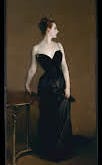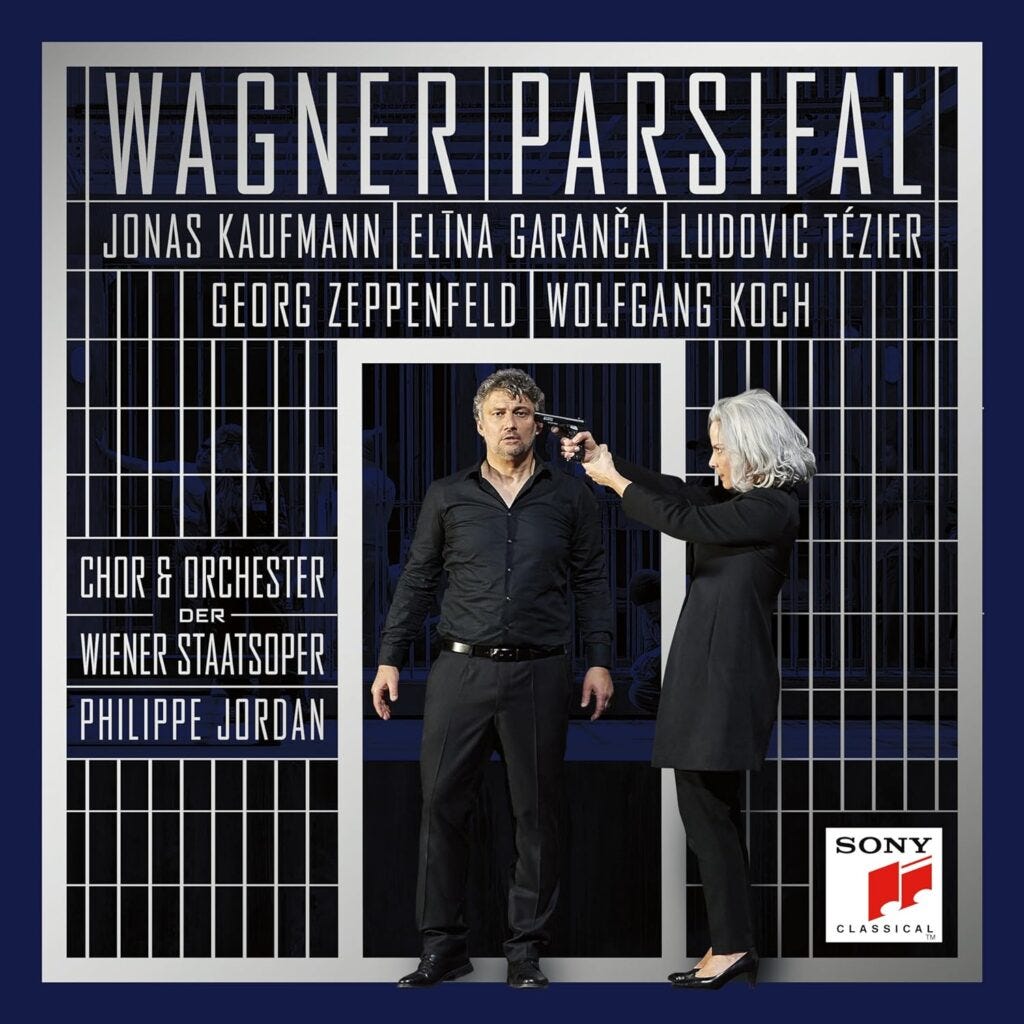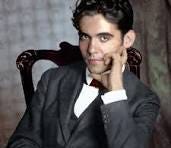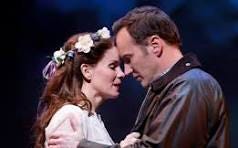Good Morning and Welcome to Ruth Leon’s Theatrewise
This is an exciting week for me. You may remember I mentioned to you that Ruth Leon’s Theatrewise is giving birth to offspring. Sorry, I think I mean ‘offshoot’. Backgrounders launches on Wednesday, the first of a new Theatrewise venture, an in-depth illustrated appreciation of an individual artist I don't have space for here. Backgrounder 1 takes a close look at the most glamourous woman of the 20th century, the irreplaceable Marlene Dietrich.
Ruth Leon’s Theatrewise remains free but if you’d like to subscribe to Backgrounders, just type your email in the box and then, please, tell all your friends.
This week’s Ruth Leon’s Theatrewise is full of all kinds of online treats. There’s a tour of the new exhibition, Sargent and Paris, conducted by the curators who put it together, from the Met and the Musee d’Orsay.
I couldn’t resist this production of Wagner’s Parsifal from the Vienna State Opera even though it’s set in a prison (why?) because the cast – Jonas Kaufmann and Elina Garanca – are simply unbeatable. So that’s Paris and Vienna taken care of, where to now?
Spain, the Spain of Federico Garcia Lorca and dark, expressionist drama. There are two of Lorca’s most important plays - Yerma and The House of Bernarda Alba - on this week’s Ruth Leon’s Theatrewise before we head off for Russia and the first Tchaikowsky competition with 23-year old Van Cliburn playing the concerto which made him as famous as any rock star and gave rise to the annual piano competition still held in his name in Texas.
And then to Scotland by way of Broadway. Brigadoon, the Lerner and Loewe musical set in the most unlikely golden version of Scotland, is still Scotland. A recent NY production was short-lived but there is a cast album and here is one of its loveliest songs.
You may be wondering why I’m making such a point of the geography of this week’s offerings. It’s because one of my favourite readers recently took me to task for making Theatrewise “too American”. Well, not this week.
All these international events are accessible just by clicking on the links beneath the pictures. Some are free, some are subscription although I suspect many regular readers already have subscriptions to National Theatre at Home and Medici.TV.
Sargent and Paris - The Met & Musee D'Orsay
Click here to watch
Sargent and Paris explores the early career of American painter John Singer Sargent (1856–1925), from his arrival in Paris in 1874 as a precocious 18-year-old art student through the mid-1880s, when his infamous portrait Madame X was a scandalous success at the Paris Salon.
Over the course of one extraordinary decade, Sargent achieved recognition by creating boldly ambitious portraits and figure paintings that pushed the boundaries of conventionality. Immersed in a cosmopolitan circle of artists, writers, and patrons, Sargent was able to navigate a successful path through the French exhibition system while achieving acclaim and awards.
Beyond the portrait studio, he traveled in search of inspiration for his art - finding subjects in Italy, the Netherlands, Spain, and North Africa. This exhibition gathers Sargent’s diverse works from this period to illuminate his path to becoming an artist, which was indelibly shaped by his experiences in the French capital. These visually stunning works provide a compelling view of the Paris art world of the late 19th century.
The iconic Madame X, a beloved highlight of The Met collection, is the culmination of Sargent’s early years in Paris. The exhibition is taking an in-depth look at this captivating portrait and the numerous preparatory sketches, and it is displayed alongside select portraits of Parisiennes by Sargent’s contemporaries.
For all of us who can't get to Paris, here's a tour of the exhibition, Sargent and Paris, conducted by the curators who put it together - Stephanie Herdrich, from the Met, and Caroline Corbeau-Parsons and Paul Perrin, from the Musée D’Orsay, Paris.
Parsifal. – Vienna State Opera
Click here to subscribe
Hungry for a touch of Wagner? In my case, not often and certainly not in a modern dress production set in a prison, but this one has a cast to die for – Jonas Kaufmann, Elina Garanca and Ludovic Tézier in Parsifal at the Vienna State Opera, so I’m sorely tempted.
Wagner concluded his extraordinary career with Parsifal, a medieval fantasy based on Arthurian legend. It recounts the journey of Parsifal, a pure-hearted young man who sets out to find the Holy Spear and, after a series of initiatory trials, becomes a Christ-like figure who himself brings salvation to the castle of Montsalvat.
Ludovic Tézier sings Amfortas, a ruler overwhelmed by his tragic destiny. Stefan Cerny, Georg Zeppenfeld, and Wolfgang Koch complete the five-star cast.
Kirill Serebrennikov’s modern and realistic staging takes place in a prison, where the brutal decor is intended to amplify the tale's inherent violence and emotional intensity.
Philippe Jordan conducts the Vienna Opera Orchestra.
Federico Garcia Lorca – Yerma/Bernarda Alba
Click here for Yerma
Click here for The House of Bernarda Alba
Federico Garcia Lorca was born 127 years ago today, on June 5th, 1898, and he died, violently, on August 19th, 1936, killed by a Fascist firing squad in the early days of the Spanish Civil War. The date is not in dispute but the reason is. Was he betrayed for being homosexual or for being a Socialist or for being a spy? Or perhaps it was a personal grudge. Nobody knows and his body was never found. He was 38.
Political turmoil was running so high that when García Lorca's brother-in-law, Manuel Fernández-Montesinos, became Mayor of Granada, he was assassinated within a week. On the same day he was shot, 19 August 1936, García Lorca was arrested.
What is indisputable is that he was one of Spain’s greatest poets and playwrights and, at the time of his death, his play The House of Bernarda Alba, just completed, had not yet been produced. It would not be seen in Spain until 1953.
He was an emblematic member of the Generation of '27, a group consisting mostly of poets who introduced the tenets of European movements (such as symbolism, futurism, and surrealism) into Spanish literature.
A leader in the Spanish avant-garde, Garcia Lorca was close to composer Manuel de Falla, film-maker Luis Bunuel, and especially the painter Salvador Dali. Then in 1929, Bunuel and Dali, both Surrealists, collaborated on their film Un Chien Andalou (An Andalusian Dog). García Lorca interpreted it, perhaps erroneously, as a vicious attack upon himself. This caused a split with his closest friends which was never repaired.
In 1931, García Lorca was appointed director of a student theatre company, Teatro Universitario La Barraca (The Shack). Its mission was touring Spain's rural areas in order to introduce audiences to classical Spanish theatre free of charge.
For La Barraca, García Lorca wrote his best-known plays, the "Rural Trilogy" of Blood Wedding (1932), Yerma (1934) and The House of Bernarda Alba (1936), in all of them he rebelled against the norms of bourgeois Spanish society. They are his attempts to return to the roots of classical European theatre, questioning conventions such as drawing-room comedies. They all challenge the accepted role of women in society and explore taboo issues of homoeroticism and class.
The Franco regime banned García Lorca's work, a ban which was not rescinded until 1953. That year, Blood Wedding, Yerma and The House of Bernarda Alba were successfully produced on major Spanish stages.
London’s National Theatre has produced successful productions of both Yerma and The House of Bernarda Alba. Yerma stars Billie Piper as young woman driven to the unthinkable by her desperate desire to have a child. Directed and rewritten by Simon Stone, this radical adaptation of Yerma is set in contemporary London and builds with elemental force to a staggering, shocking, climax.
The House of Bernarda Alba, adapted by Alice Birch and directed by Rebecca Frecknall, stars Olivier Award-winner Harriet Walter as the formidable matriarch in this pitch-black drama exploring the consequences of oppressing women.
If you haven't already done so, do subscribe to the National Theatre at Home website for access to all their current and previous productions.
The Cliburn - Tchaikovsky and Beethoven
Click here to subscribe
In 1958, at the height of the Cold War, a 23-year old American pianist, Harvey Levan Cliburn, Jr. (1934–2013), better known as Van Cliburn, won the first Tchaikovsky Competition in Moscow. The contest had been designed to demonstrate Soviet cultural superiority on the heels of the country’s launch of Sputnik so before announcing the winner, the judges checked with Soviet leader Nikita Khrushchev whether they could award first prize to an American. “Is he the best?” Khrushchev asked. “Then give him the prize!”
This victory propelled him onto the world's most prestigious stages. He returned to perform numerous times in the USSR between 1960 and 1972. He died in 1974.
The Van Cliburn International Piano Competition was established in his name in 1962 in Fort Worth, Texas and has been held there annually every since.
This year there were 28 finalists (see pic) out of 340 applicants representing 45 countries and regions. Between May 21st and June 6th, each finalist will have performed for more than four hours each. It's a big deal. The total Cliburn prize package is worth an estimated $2 million. Beyond the cash awards, they're competing for a chance at an international touring career: medalists win three years of comprehensive and personalized career management, which includes concert bookings, artistic support, and bolstered publicity efforts. The Final is tomorrow.
As the 2025 edition of the Van Cliburn International Piano Competition nears its final stages, let's go back to the beginning with the 23-year old Van Cliburn performing Tchaikovsky's Piano Concerto No. 1. This is his soaringly romantic performance of the concerto that made history as a symbol of musical diplomacy when he won the Tchaikovsky Competition. Here too is his superb reading of Beethoven's Piano Concerto No. 5, the "Emperor".
Almost Like Being In Love – Brigadoon
Click here to watch
Kelli O’Hara and Patrick Wilson made a cast recording of Brigadoon after its all-too-short run at New York City Center.
Here they are in the recording studio.
Thank you for being here. Please come back next week for more free arts online on Ruth Leon’s Theatrewise and, if you can manage it, do subscribe to Backgrounders in the box below.










